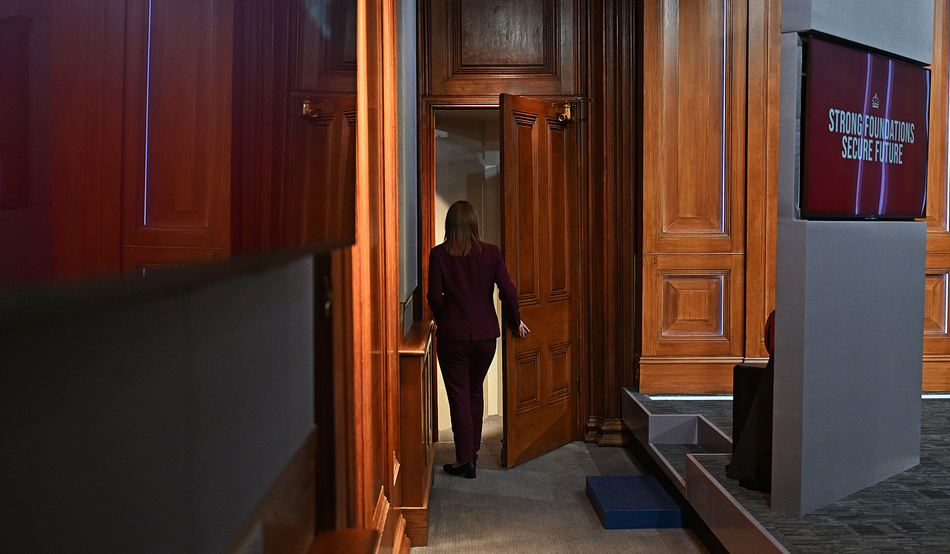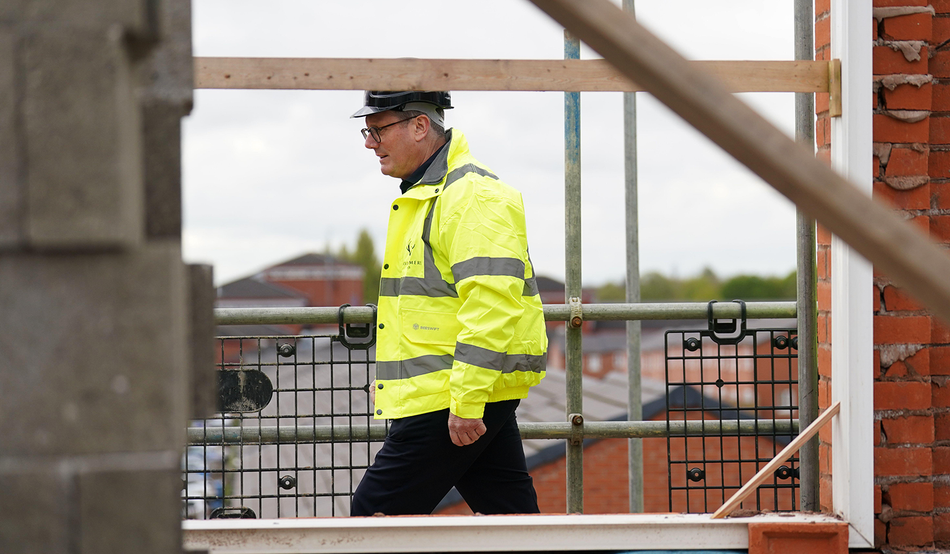Within 15 months of its landslide 1997 election victory, New Labour had made ending rough sleeping and reducing homelessness a defining mission. Within 24 months that government had established a Social Exclusion Unit with a clear mandate, which poached staff from the homelessness sector—notably Louise Casey—and seeded a second cross-cutting institution, the Rough Sleepers Unit (RSU). By 2010, the RSU had halved homelessness in England from its 2004 peak.
Today the picture could hardly be bleaker. More than 15 months after Keir Starmer’s Labour entered Downing Street, the government still hasn’t published the homelessness strategy promised in its manifesto. This is a glaring omission—and a missed opportunity to show that Starmerism stands for something.
When a household presents as at risk of homelessness to its local council, the authority has a duty to offer somewhere to live until something more permanent becomes available. More than 172,000 children in England are currently in what is known as temporary accommodation—often in cramped, poor-quality and unsafe conditions. In many instances, their childhood is spent in hostels or converted office blocks, with their education and mental health suffering as a result. Your correspondent has witnessed such cases first hand.
Homelessness is a “wicked problem”, a term popularised by the academics Horst Rittel and Melvin Webber to describe social issues so complex that they defy simple solutions. But many of the failures in the system are neither inevitable nor unsolvable. One such is the fact that people convicted of the most serious offences—including registered sex offenders—are being placed in the same kinds of temporary accommodation offered to the average homeless household.
Very little is known about this trend—indeed, various London authorities responded to the Covert Councillor’s Freedom of Information (FOI) requests by signposting to half a dozen other institutions that might know more, including the Ministry of Justice and the Metropolitan Police. That doesn’t provide much reassurance that councils, which have a responsibility to house their local residents, have a clear understanding of where ex-offenders are living. One local authority was more forthcoming, however. Data obtained exclusively from the London Borough of Southwark reveals that this local authority currently has 82 registered sex offenders placed in temporary accommodation, while more than a further 100 ex-offenders in such accommodation are classified as a safeguarding risk.
Given that Southwark does house people facing homelessness in mixed-sex hostels, could registered sex offenders be living in the same accommodation as vulnerable families with children? When your correspondent put these concerns to Southwark, the response from Natasha Ennin, cabinet member for community safety & neighbourhoods, was that the council “takes the safety of everyone in the borough extremely seriously, and all our support systems reflect this and are overseen with comprehensive safety measures. We operate a variety of hostels, including some single-sex and some mixed-sex—this is vital so that we can maximise accommodation available and cater to different people’s needs. All clients are risk assessed prior to entry to determine their suitability for an allocated accommodation.”
She continued: “Any violent or sexual offenders being released from prison are additionally assessed via MAPPA (Multi-Agency Public Protection Arrangement) to determine the risk of harm they may pose to others. This process brings together police, probation, prison services and other partners to manage risk and ensures that we would never place ex-offenders we know to be guilty of violence against women into a mixed block for example. The council does not comment on individual cases, as this could compromise confidentiality and safeguarding arrangements.”
What is the situation in other parts of the country? Across England, families with children in temporary accommodation are housed alongside adults who live alone. Some of them are living in hostels. According to the government there are now more than 6,800 households living in such accommodation England-wide, including 47 households placed by Southwark in hostels. Twenty-five of these households include children. Authorities FOI'd by the Covert Councillor admitted that they do not have policies in place to separate single households and families with children. Redbridge, in East London, said that “there is no set policy for placement in blocks/site, we want to ensure that our allocations are flexible”. They said that they do "have a small number of blocks... for set groups", such as single men or mothers and babies, and that most of their blocks "are procured to allow us to place families and singles". There are "suitability forms" and safeguarding concerns are "normally picked up prior to offer being made".
Birmingham, meanwhile, said that due to the “emergency nature” of temporary accommodation in the city "we do not have a policy on placing single people with families". They go on to say, however, that they "operate on the basis" that those single households and families are kept separate.
These various FOI responses raise a question: in cases where authorities want the "flexibility", are they ensuring they are separate? Over 11,000 children are homeless in Birmingham, 548 of them living in hostels.
Greenwich in south London, meanwhile, doesn’t collect information on high-risk ex-offenders in temporary accommodation, but the local authority did say that more than 500 ex-offenders presented to the council at risk of homelessness or already homeless over the past three years—a number that has risen from 110 in 2022–23 to 236 in 2024-25.
Shelter, the homelessness charity, told the Covert Councillor that local authorities often place households in mixed-sex hostels and that it puts families—especially women and children—at risk. “With genuinely affordable homes in short supply, families and women fleeing abuse are being accommodated in mixed-sex and mixed-use hostels, which can lead to serious safeguarding issues. One in ten people living in temporary accommodation feel unsafe because they’re experiencing physical violence, threats or verbal abuse,” said Mairi MacRae, director of campaigns and policy.
It’s not just women and children at risk either; men are too. The victims of trafficking and sexual assault being placed in mixed-sex hostels are often women, but so are men or boys fleeing organised gang violence. Shelter isn’t calling for a ban on mixed-sex facilities, but instead says the government should “unfreeze the Local Housing Allowance in the Autumn Budget” and build 90,000 social homes over the next decade so that people don’t need temporary accommodation in the first place.
The Covert Councillor has visited hostels used for temporary accommodation. Many do not feel like welcoming places, certainly not for children. The converted office blocks deployed by some councils are more like soulless army barracks than places where families could rebuild their lives. They aren’t ideal for ex-offenders either. When released prisoners are deemed a risk to the public, they are supposed to be provided with supervised housing, known as Community Service Accommodation. But when spaces in such specialist accommodation run out, as they often do, ex-offenders may be placed in the same temporary accommodation offered to other households facing homelessness.
The potential scale of the overlap is concerning. According to probation statistics, for some age groups nearly one in five prison leavers were homeless or sleeping rough after three months of being released (18 per cent for 40-49-year-olds). This is a phenomenon known as the pipeline from prison to homelessness.
Housebuilding has flatlined in London, where the homelessness problem is most acute. Sadiq Khan’s new emergency package will boost supply, but at the cost of affordable homes. The stretched finances of authorities mean that councils, for their part, have limited room to manoeuvre. Creating separate hostels for single-person households and families with children would require local authorities to borrow, build or bulldoze.
But are solutions really that hard to imagine? If the government is serious, it should create dedicated routes to housing more high-risk ex-offenders, with specialist support and supervision, to help ensure that their return to life outside prison is a success. Some charities are calling for mixed-sex hostels to be banned, and for more single-sex hostels to be established as a priority. These are already an option for women fleeing domestic violence, but there just aren’t enough of them. The government could also mandate proper collaboration between probation services and local authorities, which despite some advances is still too weak. All of this requires investment. That long-awaited homelessness strategy would be a good place to start.













